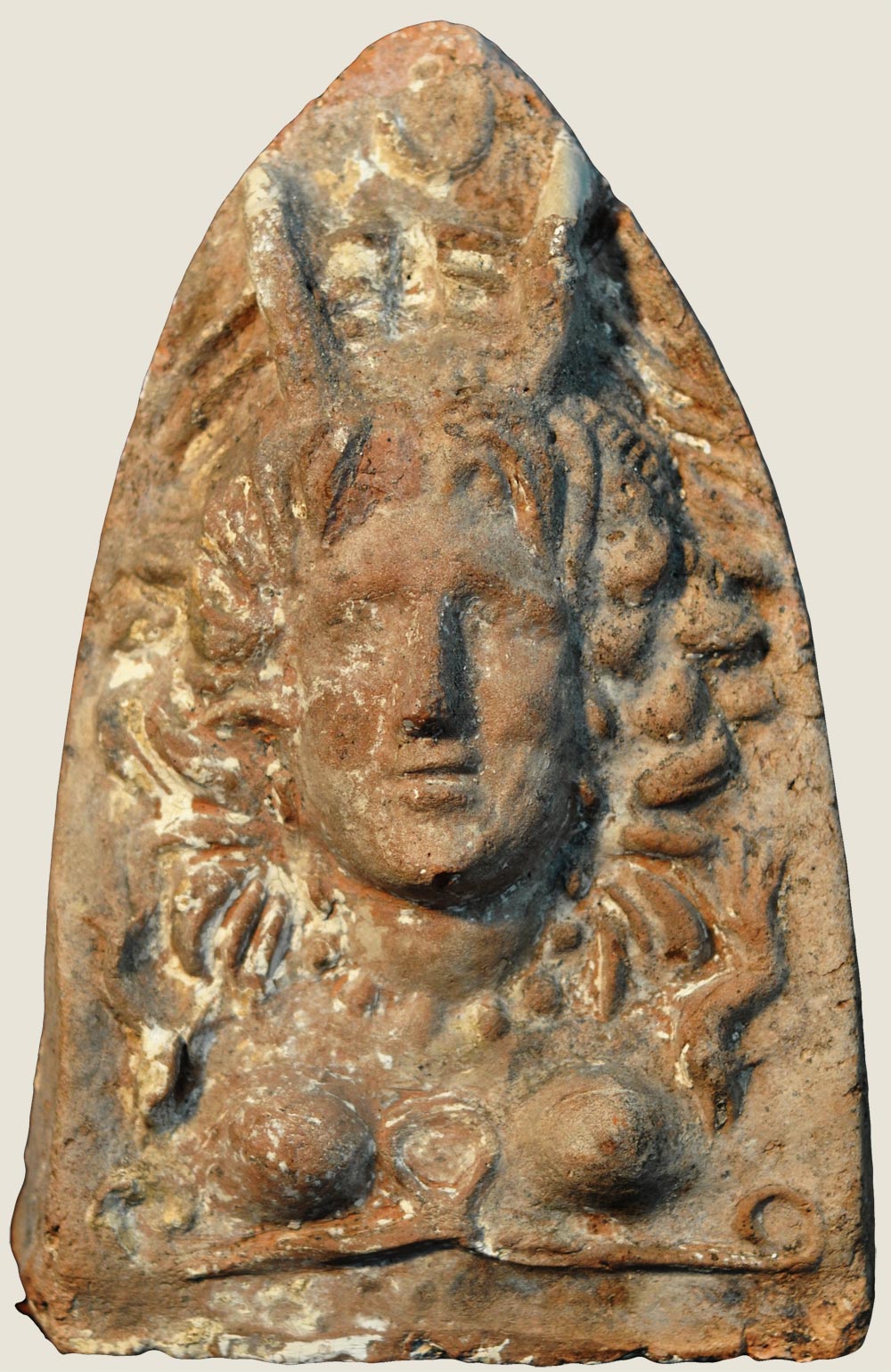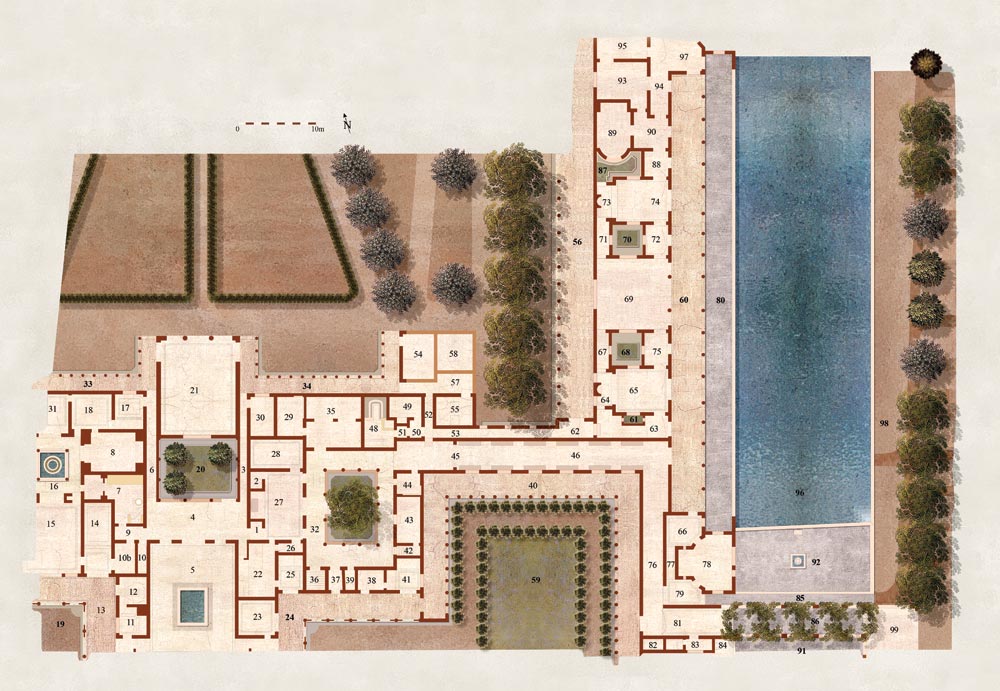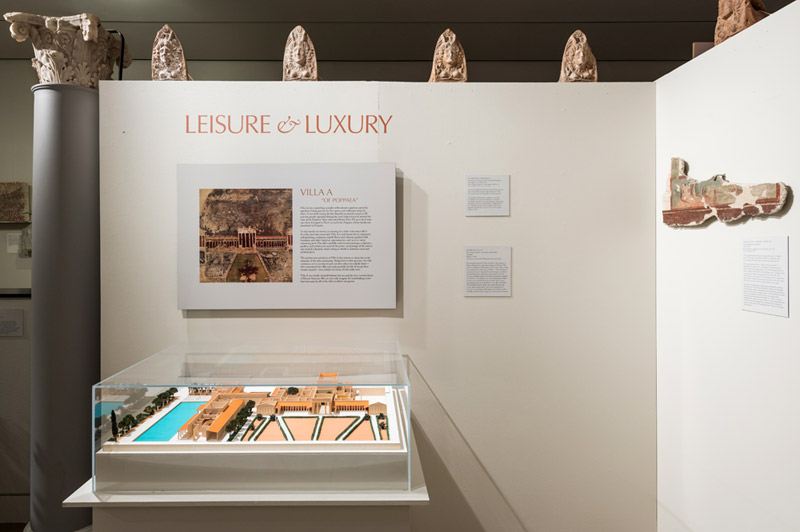
Decorative antefixes like these were used to cover the ends of roof tiles along the edge of the roof. They were mold-made and originally colorfully painted.
The goddess represented here displays a number of attributes that makes her difficult to identify—including a crescent moon and schematic wings above her head, goat horns, and dolphins on either side of her. Though several of these attributes refer to the Egyptian goddess Isis, some of them refer to other deities as well.





